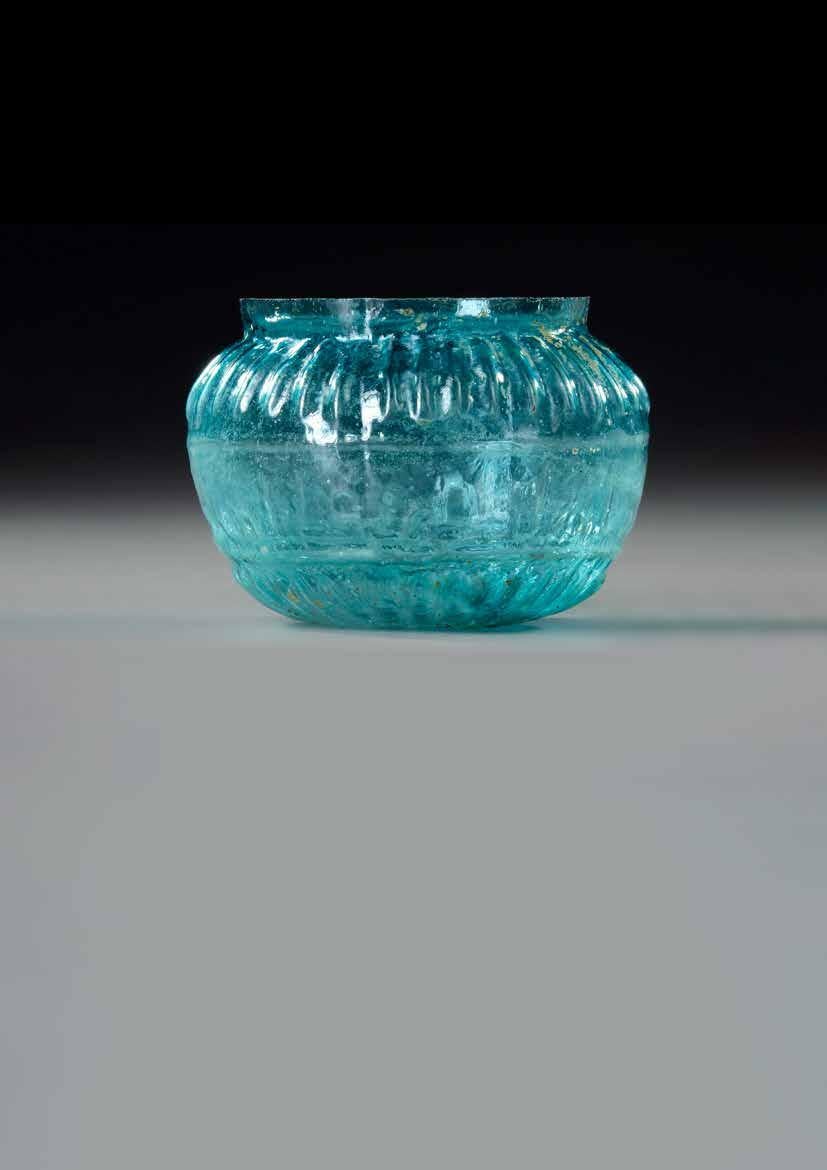
2 minute read
AN ISLAMIC SPHERICAL OPENWORK INCENSE BURNER, SPAIN, 12TH CENTURY
This bronze censer, or incense burner, is composed of two parts that were molded separately. First, a circular base in relief supports a lower hemisphere provided, on the outside, with three rings for the fixing of the rivets intended to attach it to the upper part. This upper part, also hemispherical and provided with rings for the rivets, is decorated with geometric patterns pierced in openwork and topped by what appears to be the summit of a minaret, with its circular gallery and its conical roof surmounted by a feature now damaged, perhaps a crescent moon. On the side, elements of the chain that allowed the piece to be suspended are still visible. Given the oxidation, they are preserved in the form of a highly contorted mass. The shape of this censer is very rare. In fact, most Muslim utensils of this type, attested mainly in the Near and Middle East, were designed to be placed on a support. They usually have three or four feet in the form of feline paws and a long shaft for their carrying. Among these, an Iranian example dated to the 12th century A.D., now housed in Berlin, can be related to our censer, especially as regards the rivet rings and the pierced patterns, on the handle in this case (Kühnel 1920, fi g. 93; Aga-Oglu 1945, fi g. 4).
It is, however, in Spanish Muslim art that our artifact has its closest parallel, namely the famous Almoravid bronze censer housed in the Museum of the Alhambra in Granada (inv. 3805; Fernández Puertas 1976; Zozaya and Von Gladiss 1995), similar in shape and differing only in the upper part topped with a bird on a ball. It is also worth noting the overall quality of the piece, as well as the delicate incisions, superior to our example. Study of the Granada specimen, confidently dated to the first quarter of the 12th century A.D., allows us to understand the rather unusual nature of our example. Like the masterpiece in the Almoravid Alhambra, it is likely an object commissioned by Muslim rulers and manufactured by Christian artisans located in Andalusia, who were inspired by incense burners suspended in the Late Byzantine churches, in which such liturgical objects were commonplace.
Advertisement
Condition: Complete, but slightly deformed in the middle, probably because of an impact. Traces of the iron suspension chain.
Height: 14.5 cm.
Provenance
Private collection, Switzerland, acquired in 2000.
Bibliography
AGA-OGLU M., About a Type of Islamic Incense Burner, in The Art Bulletin, vol. 27, no. 1 (March 1945), pp. 28-45.
FERNANDEZ PUERTAS A., Incensario de época almorávide, in Miscelánea de Estudios Árabes y Hebraicos, no. 25, 1976, pp. 115-122. KÜHNEL E., Islamische Kunstabteilung: Islamisches Rauchergerät, in Berliner Museen, 41:6, Aug. - Sep. 1920), pp. 4-8. ZOZAYA J. and VON GLADISS A., Weihrauchgefäss, in VON GLADISS A. and SCHEFFOLD M. (eds.), Schätze der Alhambra: Islamische Kunst aus Andalusien, Berlin, 1995, p. 166.
Estimate € 5000 - € 8000










